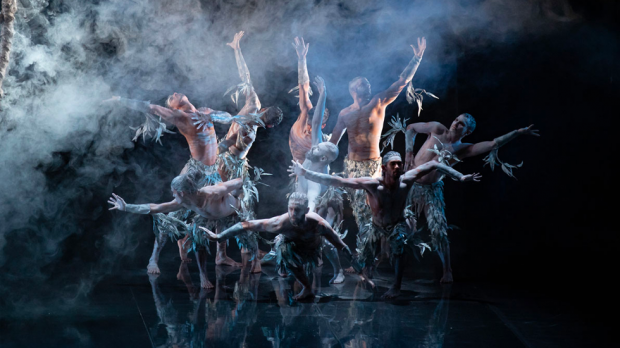
Directed by Nel Minchin, Wayne Blair
Featuring Stephen Page, David Page, Russell Page
Firestarter – The Story of Bangarra, takes audiences through the three decades of history that have gone into the influential and world-renowned dance company. Central to that story are three Aboriginal brothers (Stephen, David, and Russell Page) that were influential in turning this dance group into a prestigious company. However, it is a tale that is studded by tragedy, as life begins to imitate art, and the social issues portrayed on the stage, deeply affect the brothers.
In form, Firestarter – The Story of Bangarra doesn’t attempt to do too much that is original within the documentary format, seemingly content to tell its story in a relatively traditional manner. In this regard it’s wise enough to get out of the way and let the story speak for itself. Where this film excels is in the tale that it tells and its occasionally stunning uses of imagery and sound, brought about through the company’s body of work.
Firestarter presents the story in the words of the participants, often at the time of major triumphs and upheavals. Through Bangarra’s own archival footage, the personal filmography of the Page family, and the impressive amounts of interviews and pieces, both on the Bangarra company itself, and the Page brothers in their various roles, there is a lot that this documentary is able to bring to the screen to chart the dance company’s history. However it also catches a moment in the social history of First Nation representation, as the Bangarra dance company is on the forefront of an artistic expression of identity.
The audience is led through the changes that have affected the Pages’ lives. From the 1967 referendum on Aboriginal rights, to the outgrowth of cultural expression of aboriginality in the late seventies and eighties, to the backlash of the Howard years, and the world wide spotlight of the Olympics’ Opening Ceremony. It not only shows a growth in pride and acceptance, but a growing awareness of the social issues faced by First Nations’ people, and the inherited trauma that affects many of the children and grandchildren of the stolen generation.
Threaded through this is the personal story of the three Page brothers that have been central to the company’s development. Here, some of that trauma comes into play, as the company finds itself experiencing some of the issues its works are exploring. The frank and fearless interviews with Stephen Page and many of the surviving company members spell out the effect that these have had on family and friends. It is a tragedy and one that is at times hard to watch.
This also acts as a little flaw in the documentary structure. As many of the individuals involved are still undergoing healing, there are times that it feels incomplete as a work, and the structure meanders a little. Still Firestarter -The Story of Bangarra manages to bring it home at the end giving us an insight into the new generation of dancers, and a look at the future to come. In doing this it gives us signs of healing, and future growth.
DAVID O’CONNELL